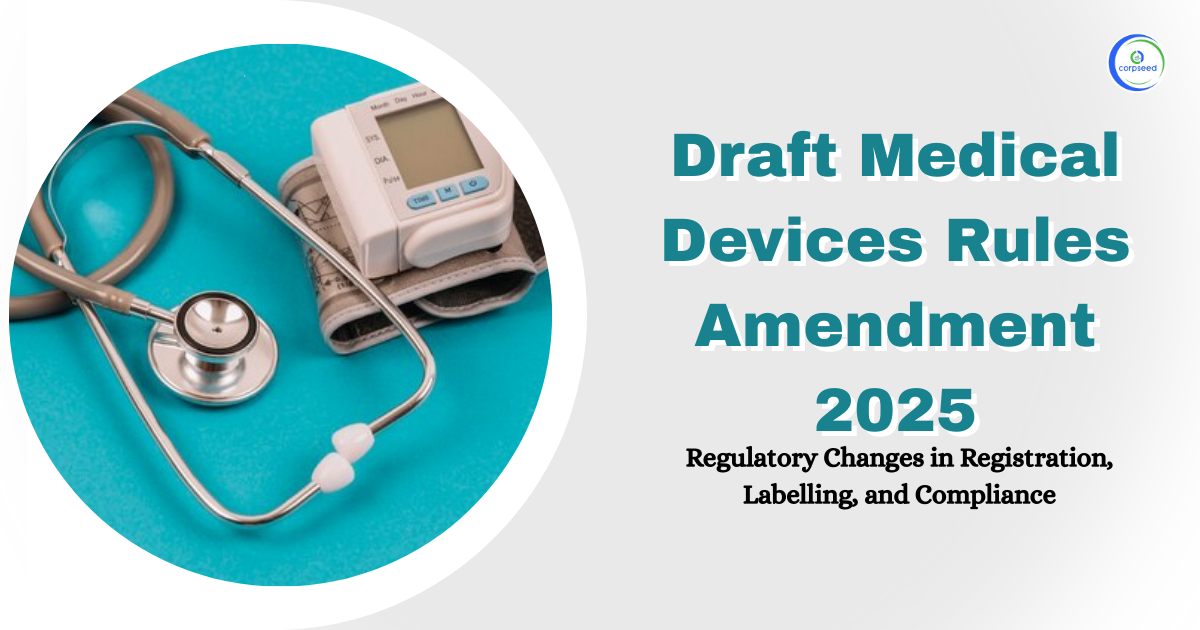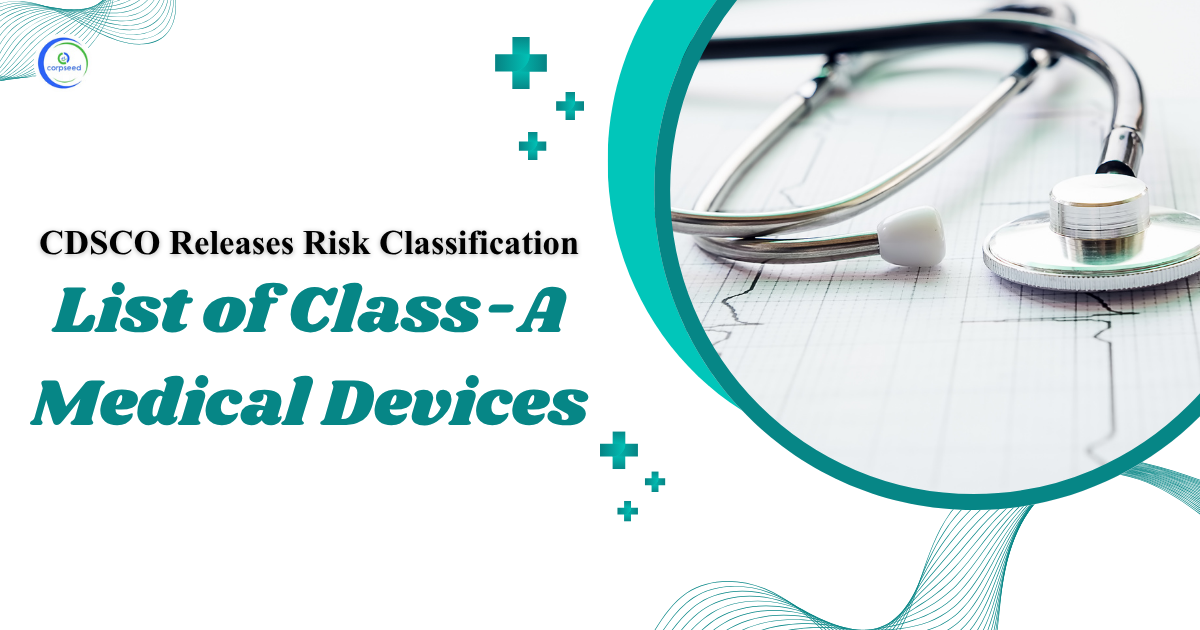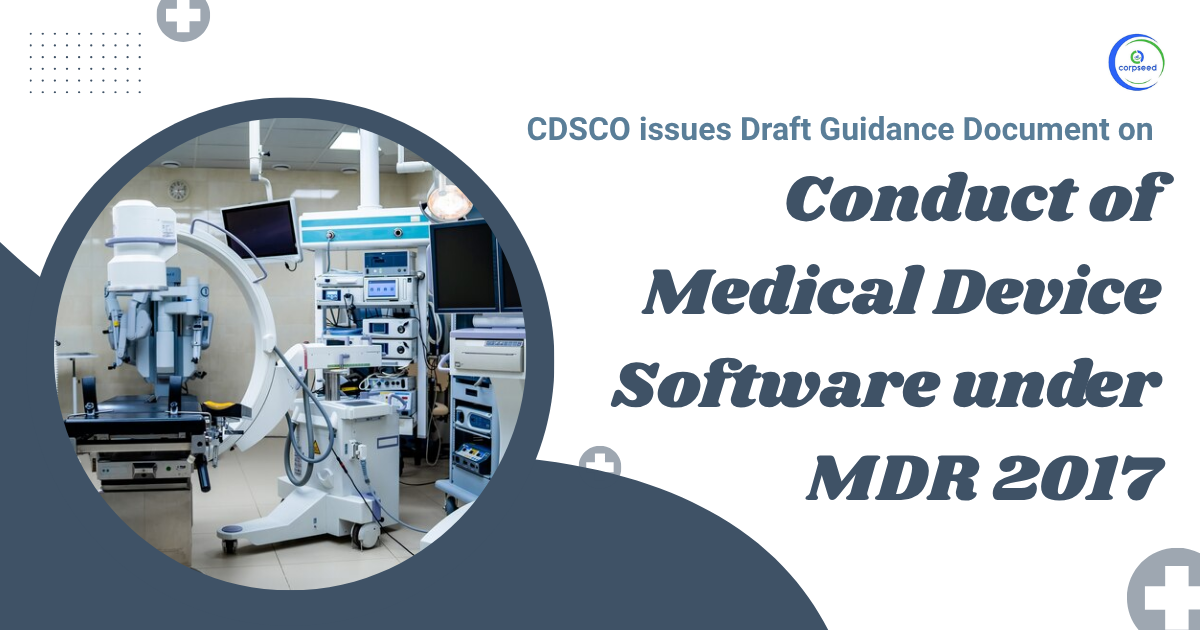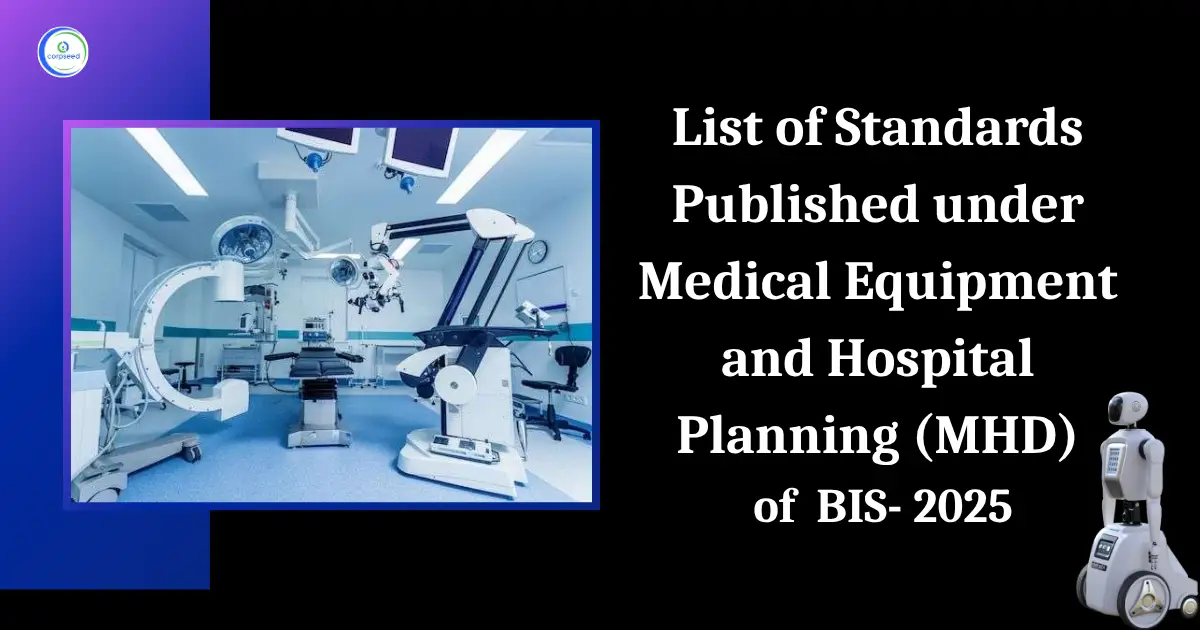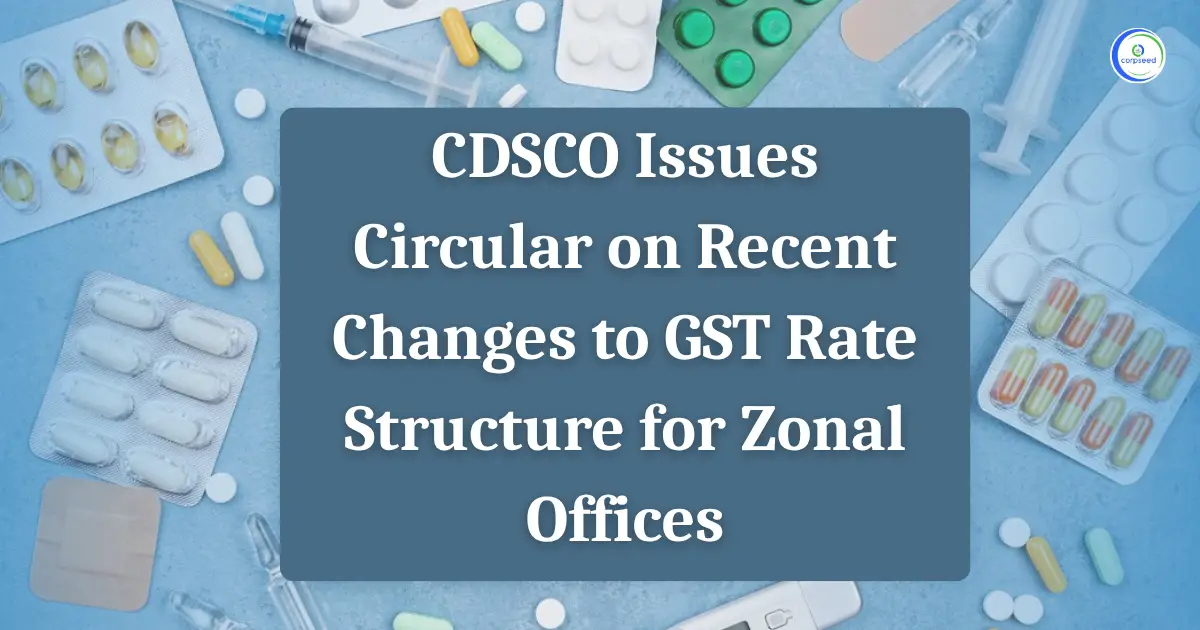A Brief Introduction of Rehabilitation and Physical Support
The idea of rehabilitation is one that is hotly debated around the world. Since over a billion people worldwide—more than 15% of the total population—live with some sort of disability, this is by no means surprising. Furthermore, a recent study found that 2.41 billion people live with illnesses that affect their daily functioning and could benefit from rehabilitation services, which translates to 1 in 3 people needing these treatments over the length of their sickness or injury.
Table of Contents
- A Brief Introduction of Rehabilitation and Physical Support
- What is a Medical Device?
- Types of Medical Devices in India
- Eligibility Criteria for Medical Devices Registration/Import
- Process & Fee for Medical Devices Registration
- Documents Required to be Attached
- Time Involved & Validity for Registration
- Re-registration or Renewal of the Registration Certificate
- Post-Compliances After Receiving Registration
- How to Register Any New /Additional Medical Device If Medical Device Registration Obtained Already?
--------------Blog Contact Form-------------
From 1st of October 2022, the said medical devices having risk class A and B will be covered under the licensing regime of CDSCO. Once the devices are under the scope of licensing regime of CDSCO, all the importers and manufacturers of the said devices will have to apply for the license in order to sell their products in Indian Market.
The Rehabilitation and physical support category consists of total of 63 medical devices which are classified on the basis of their risk class and intended use. Out of which only class A and class B medical devices will fall under the licensing regime from 1 October 2022. The CDSCO listed medical devices are as below mentioned
| Rehabilitation and Physical Support | |||
| S. No. | Name of the Medical Device | Intended use | Classification India as per First Schedule part- 1 MDR 2017 |
| 1 | Acupressure calf band | Intende to wear around the calf to apply pressure to an acupressure point to relieve low back pain, including sciatica and piriformis syndrome. A Non powered belt like device. | Class A |
| 2 | Arthritis TENS system | Intended to be used as adjunctive therapy in reducing the level of pain and stiffness associated with rheumatoid arthritis or osteoarthritis by electrically stimulating peripheral nerves across the skin (transcutaneously). | Class B |
| 3 | Back pulldown exerciser | Intended to strengthen the muscles of the back (especially the latissimus dorsi) through a repetitive pulldown motion performed with the arms against the force of a weight. | Class A |
| 4 | Back row exerciser | Intended to strengthen the muscles of the back through a repetitive rowing motion (as in rowing a boat with oars) performed with the arms against the force of a weight. | Class A |
| 5 | Back/leg/chest dynamometer, electronic | Powered device intended to assess neuromuscular function by measuring the force or power exerted by the back, chest, and/or leg muscles during flexion. | Class B |
| 6 | Back/leg/chest dynamometer, mechanical | Non powered device intended to assess neuromuscular function by measuring the force or power exerted by the back, chest, and/or leg muscles during flexion. | Class A |
| 7 | Balance ball exerciser | Intended to be used as an unstable surface on which to perform exercise to improve balance and posture. | Class A |
| 8 | Balance-training tongue electrical stimulation system | Intended to provide biofeedback for training of balance by sensing body movements and subsequently producing signals which are translated into electrical stimuli applied to the tongue, enabling a patient to correlate electrotactile stimulation with their head and body position during exercise sessions. | Class B |
| 9 | Bed/chair electric massager | Intended to provide therapeutic massage to the occupant of a bed or chair for the treatment of body aches and pains. | Class B |
| 10 | Bicycle ergometer | Intended to be used to provide a quantitative measurement of the rate at which work (energy) is performed by a muscle or group of muscles under controlled conditions. | Class A |
| 11 | Bladder-emptying vibratory stimulator | Intended to initiate urination and facilitate complete bladder emptying through application of small mechanical vibrations to the lower abdomen to promote urethral sphincter relaxation. | Class B |
| 12 | Blue/red/infrared phototherapy lamp | Intended to emit blue light, red light, and infrared radiation (heating effect) for phototherapy treatment of mild skin disorders (e.g., mild acne), superficial skin wounds, and musculoskeletal symptoms (e.g., pain, spasm, stiffness). | Class A |
| 13 | Body elastic exerciser | Intended to primarily strengthen several or all of the major muscle groups of the body (i.e., in the arms, legs, chest, back, and/or abdomen) through repetitive body motion against elastic resistance. | Class A |
| 14 | Body flywheel exerciser | Intended to strengthen several of the major muscle groups of the body (i.e., in the arms, legs, chest, back) through repetitive body motion against a flywheel. | Class A |
| 15 | Circulating-fluid thermal therapy system | Intended to be used to pump heated and/or cooled fluid (e.g., water) through externally applied packs for localized hot and/or cold therapy to help treat a variety of adverse conditions resulting from musculoskeletal injury (e.g., pain, swelling, inflammation). | Class B |
| 16 | Cold compression therapy cervical spine collar | Intended to facilitate, through cooling and compression, the treatment of a variety of conditions resulting from injury/surgery to the neck region (e.g., inflammation, stiffness, whiplash). | Class A |
| 17 | Cold/cool therapy gel | Intended for localized topical skin application to provide a cooling effect for underlying muscles/joints to reduce pain and swelling. | Class A |
| 18 | Cold-air therapy unit | Intended to reduce localized pain/inflammation, and/or to reduce thermal skin damage by applying cold stream of air during dermatological laser treatments. | Class B |
| 19 | Core-body mechanical weight exerciser | Intended to enable a patient with a lumbar spine injury to perform controlled extension, contraction, and/or twisting movements of the lumbar/thoracic spine back region and the abdomen, for testing and rehabilitation. | Class A |
| 20 | Deep-tissue electromagnetic stimulation system | Intended to apply an electromagnetic (EM) field to body tissues to: 1) treat musculoskeletal disorders (e.g., osteoarthritis, osteoporosis); 2) treat body pain (musculoskeletal, postsurgical); and/or 3) help facilitate soft and hard tissue wound/injury healing, with no production of therapeutic deep heat. | Class B |
| 21 | Electric massager | Intended for respiratory therapy or physiotherapy (e.g., help reduce muscular tension, arthritic pain or joint mobility) in the home and/or healthcare facility. | Class B |
| 22 | Electronic goniometer/kinesi ology sensor | Intended to evaluate a patient’s range of motion/movement of individual joints/limbs/spine; it is used in a clinical setting typically before/after a medical/surgical intervention, or to assess degree of physical fitness. | Class B |
| 23 | Exothermic heat therapy pack | Intended to be applied to the body surface, sometimes with pressure, to provide heat therapy to reduce muscle spasms and cramps and/or for joint and muscle stiffness and pain. | Class A |
| 24 | Finger/hand exerciser | Intended primarily to strengthen the muscles of the fingers and hands through repetitive finger/hand motion against resistance from elasticity or density. | Class A |
| 25 | Gait analysis system | Intended to be used to study walking or running patterns. | Class A |
| 26 | Hand dynamometer/pin chmeter, electronic | Electronic device intended to assess neuromuscular function by measuring the force or power exerted by the muscles of the hand/forearm to squeeze/pinch an object. | Class B |
| 27 | Hand dynamometer/pin chmeter, mechanical | Mechanical device intended to assess neuromuscular function by measuring the force or power exerted by the muscles of the hand/forearm to squeeze/pinch an object. | Class A |
| 28 | Hydrotherapy treadmill | Powered device intended for use in partially immersed in water, e.g., in a hydrotherapy tank, to provide additional resistance to the treadmill walking exercise without increasing the impact and/or stress on the patient's joints. | Class A |
| 29 | Manual goniometer | Non powered device intended to be used in a clinical setting to measure the range of motion of the limb of a patient by measuring the angle of movement achieved at the joint. | Class A |
| 30 | Medium-wave diathermy treatment system | Intended to produce a therapeutic deep heat within specific volumes of the body through the transcutaneous transmission of electromagnetic (EM) energy in the radio-frequency (RF) bands of 0.5 megahertz (MHz) to 1 MHz. | Class B |
| 31 | Microwave diathermy treatment system | Intended to produce a therapeutic heat 1 to 2 cm below the skin within specific volumes of the body through the transcutaneous transmission of high frequency electromagnetic (EM) energy, typically 2,450 megahertz (MHz) [microwave], to promote tissue healing and pain relief. | Class B |
| 32 | Musculoskeletal infrared phototherapy unit, | Intended to provide a source of infrared (IR) heat for localized treatment of musculoskeletal pain/injury (e.g., muscle pain, sports injury, rheumatism) and to improve blood circulation in the treated areas to facilitate healing. | Class B |
| 33 | Parallel bar exerciser, | Intended to assist users in maintaining good walking posture, particularly a person with a disability, a paraplegic, or a patient who has suffered a stroke and is learning to walk. | Class A |
| 34 | Physical therapy massager | Electrically powered device intended to provide therapeutic massage to a larger area than hand-held massaging devices. | Class B |
| 35 | Physical therapy paraffin wax bath | Intended to be filled with liquid paraffin wax for physical therapy. | Class B |
| 36 | Physical therapy steam bath | Intended to apply hot steam as a physical therapy to a patient. | Class B |
| 37 | Standard treadmill, mechanical | Intended to facilitate in-place walking, jogging, or running to promote muscle redevelopment, to restore motion to joints, and to promote weight loss and cardiovascular fitness. | Class A |
| 38 | Standard treadmill, powered | Electrically powered unit intended to facilitate in-place walking, jogging, or running to promote muscle redevelopment, to restore motion to joints, and to promote weight loss and cardiovascular fitness. | Class A |
| 39 | Telemetric diagnostic spirometer | It is a Battery powered portable device Intended to measure several or all respiratory-gas volume and flow parameters needed to evaluate basic pulmonary function [e.g., vital capacity (VC), peak expiratory flow (PEF), forced expiratory volume (FEV), and forced expiratory flow (FEF)], and to transmit the pulmonary function data via a communication device to a healthcare professional(s) at a remote server. | Class B |
| 40 | Wall bars | A device that is permanently fixed to the wall is intended for training and rehabilitation to regain and/or improve body movement and balance and/or for strengthening the limbs and the trunk of the body. | Class A |
Central Drugs Standard Control Organisation:
India is growing as one of the nation's leading in the pharmaceutical businesses and is among the top ten nations in terms of the pharmaceutical industry. Several factors such as a large population, growing health awareness, affordable medical facilities, and better research facilities have given rise to the manufacturing and development of pharma business in India. However, with the increasing scope for the growth of the pharma industry in India, there are possibilities for the sale/purchase of medical equipment & device illegally or without jurisdiction. Therefore, the Government of India has established the Central Drug Standards Control Organization (CDSCO), which is the primary legislative body and has been responsible for the regulation, control, and management of pharmaceuticals and medical devices in India apart from the appointment of the Drug Controller General of India (DCGI), and has conferred the responsibility of undertaking assessment, approval and regulation of further compliances(import, export, sale, distribution) in the matters of medicinal drugs and medical devices(including any existing or any new) drugs/devices in accordance with the provisions of the Drugs and Cosmetics Act 1940.

What is a Medical Device?
According to the latest definition as provided under the Medical Devices Amendment rules 2020, as notified on 11.02.2020. However, taking care of circumstances the government has exercised its powers to include more categories by widening the scope of the definition of “Medical Device” under the Act. It states-
"Devices used in general medical practice such as medical apparatus, instruments, implants appliance, etc., which are either used individually or in combination, and are intended to be specifically applied for human beings or animals and are further intended to obtain the desired function by such means and for such purposes as provided below, but is not intended to meet the primary intended action on human body or animals by any pharmacological or immunological or metabolic means-
- Analysis, prevention, observing, treatment, or mitigation of any disease or disorder;
- Analysis, observing, treatment, mitigation, or support for any injury or disability;
- Examination, replacement or alteration or support in findings of the anatomy or a physiological process;
- For supporting or sustaining life;
- Decontamination of medical devices; and
- Conception related equipment’s & devices.
Therefore, every manufacturer or importer or both of any medical devices in India shall be required to obtain registration as per the provisions of the Drugs and Cosmetics Act 1940. Any failure to comply with the same may invite legal action including penalty & prosecution under the Act.
Types of Medical Devices in India
Provisions related to the import, manufacture, sale & distribution of medical devices are regulated under the provisions of the drug and cosmetics Act 1945. Under the New Medical Rules 2017, all medical devices have been classified into four different categories depending on their usability & risk involved as provided below.
- Class A:- Low-risk devices like a thermometer, tongue depressors, etc.
- Class B:- Low moderate risk like Hypodermic Needles, suction equipment, etc.
- Class C:- Moderate high-risk devices like Lung ventilator, etc.
- Class D:- High-risk devices like Heart valves, implantable devices, etc.
Where Class A & B devices are considered to be less risky and moderate devices, for which the application to manufacture has to be filed to the State Licensing Authority. Whereas Class C &D are considered to be high and very High-risk devices and the application for these has to be filed to the Central Licensing Authority of India.
Eligibility Criteria for Medical Devices Registration/Import
The provisions related to activities such as Import, manufacture, sale, and distribution of medical devices have been regulated under the provisions of the Drugs & Cosmetic Act 1940 & Rules 1945. Therefore, any person/firm/enterprise, etc. holding a wholesale drug license and/or manufacturing license issued under the Drugs and Cosmetics Act, 1940 and Rules 1945 could make an application for Registration and import of medical devices into India.
Process & Fee for Medical Devices Registration
Types of Medical Devices Registration
- Registration/Import of any existing medical device;
- Registration /import of any new medical device
Step 1: Determine Whether Your Medical Device Is Under Notified List or Not
The CDSCO authority has provided a list of notified medical devices that need to compulsorily obtain registration under the Drugs and Cosmetics Act 1940 and in accordance with Medical devices rules 2017. However, there may be any medical devices that have not been expressly notified by the CDSCO authority, or in case of new medical equipment, the manufacturer/importer shall be required to obtain a NOC in such cases. For instance, Blood Grouping Sera Ligatures, Sutures, Staples Intra-Uterine Devices (Cu-T), Condoms, Tubal Rings, Surgical Dressing, Umbilical Tapes, Blood / Blood Component Bags do not need registration, whereas devices such as spinal needles, cochlear implants, syringes, and needles, heart valves, endotracheal tubes and catheters among others should undergo registration provides with the CDSCO.
Step 2: Appoint an Authorized Representative (in case of Foreign Entity)
For a foreign business manufacturer entity, it shall be necessary to appoint an authorized business entity in India, who shall be the contact person for the inspection authorities during the process, assist in device approvals, and registrations process, and vigilance adverse event reporting. The Indian Authorization should hold a wholesale drug license in forms 20B& 21B.
Step 3: Fill out the Applicable form for Medical Device Registration
In the next step, the manufacturer/importer for MD shall be required to submit the registration form of a regulatory dossier, along with all the prescribed documents along with the prescribed fee on the CDSCO portal to the DGCI (Drugs Controller General of India) by logging on to the online CDSCO portal https://cdsco.gov.in/opencms/opencms/en/Home/ and signing into the portal.
Following forms along with applicable govt. fees have been provided below, which shall be required to be paid through payment challan-
| Applicant Type | Class of MD | Application Form | License Form |
| Importer | A,B,C,D | MD-14 | MD-15 |
| Manufacturer | A B | MD-3 | MD-5 |
| Manufacturer(Loan License) | A B | MD-4 | MD-6 |
| Manufacturer | C, D | MD-7 | MD-9 |
| Manufacturer(Loan License) | C, D | MD-8 | MD-10 |
However, in the case of new equipment or medical device-
| Application Type | Class of MD | Application Form | License Form |
| Importer Clinical Investigation | A,B,C,D | MD-22 | MD-23 |
| Import License | A,B,C,D | MD-26 | MD-27 |
| Test License(for importer) | A,B,C,D | MD-16 | MD-17 |
| Manufacturer (Clinical investigation) | A,B,C,D | MD-22 | MD-23 |
| Manufacturer License | A,B,C,D | MD-26 | MD-27 |
| Test License | A,B,C,D | MD-16 | MD-17 |
Further, each application shall be supported with the list of documents and the requisite fee as provided in the online portal of CDSCO-
| Type of License | Class of Device | Applicable Regulation | Govt. Fee |
|
For Manufacturing/Loan License
|
A or B; | 20(2) | Rs. 5000 Rs. 500 |
|
For Manufacturing/Loan License
|
C or D; | 21(2) | Rs. 50,000 Rs. 500 |
|
For Import License(other than IVD)
|
Class A | 34(2) | 1000 Dollar 50 Dollar |
|
Import License(other than IVD)
|
Class B | 34(2) | 2000 Dollar 1000 Dollar |
|
Import License (in IVD)
|
Class A or B | 34(2) | Rs. 1000 Rs. 10 |
|
Import License (other than IVD)
|
Class C or D | 34(2) | 3000 Dollar 1500 Dollar |
|
Import License(in IVD)
|
C or D | 34(2) | 3000 Dollar 500 Dollar |
Step 4: Obtain Certificate of Registration in Prescribed form
Once the application is submitted on the CDSCO portal, the DGCI registration authority may send a query through an inquiry letter to the manufacturer or from the authorized representative of the importer, along with the timeline within which the query should be answered and sometimes, may also ask for a technical presentation On satisfaction the authority may issue a license in such form as provided in the above list. After obtaining registration, the manufacturer or his authorized representative may apply for an importer license.
Documents Required to be Attached
- Form 40
- ISO 13485 certificate
- Full Quality Assurance Certificate
- CE Design Certificate
- Undertaking that all information provided is authentic
- Either a Free Sale Certificate or Certificate from the Foreign Government
- Certificate of Marketability from GHTF (Australia, Canada, Japan, the European Union, and the United States);
- Plant Master Report
- Device Master File
Time Involved & Validity for Registration
If the DGCI doesn’t ask for a Technical Presentation or Subject Expert Committee (SEC) audit, it takes around 6-9 months to obtain a Medical Devices Registration. In cases where Technical Presentation or Subject Expert Committee (SEC) audit, is required, it may take additional 3-6 months.
Once obtained the Registration Certificate shall be valid for a total period of 3 years from the date of issue of registration unless suspended or cancelled by the DGCI authority for proper causes.
Re-registration or Renewal of the Registration Certificate
The application for renewal of the MD registration certificate shall be made at least nine months from the expiry of the registration certificate. Though there are no additional requirements for the renewal of registration, it shall be necessary for the certificate holder to provide a copy of the Plant Master File (PMF) and Device Master File (DMF), where there are no changes in the PMF and DMF,
Post-Compliances After Receiving Registration
Though there are not many compliances in place about the registration certificate, it shall be compulsory for the certificate holder to-
- In case of any change that has taken place about the constitution of the firm and/or address of the registered office/factory premises, the MD manufacturer/authorized representative of the importer to intimate the licensing authority regarding the same in writing;
- In case any such change has taken place, the existing registration certificate shall be valid for a maximum period of three months from the date on which the change has taken place, and during this time, the manufacturer/authorized representative shall be required to obtain a fresh Registration Certificate;
How to Register Any New /Additional Medical Device If Medical Device Registration Obtained Already?
In case an importer wants to obtain registration for manufacturing of any additional manufacturing device, then such person shall be required to obtain an endorsement to the existing Registration Certificate along with the prescribed documents holding that manufacturing of an additional device is being undertaken in the manufacturing site as provided in the registration certificate along with a fee of 1000 dollars fee for each additional device.
Drug License
A drug license is an official permission granted to individuals or companies that manufacture, distribute, and sell drugs in India. It ensures adherence to the safety and quality standards of the regulatory authorities that ensure public health.
Medical Devices Import/Manufacturing
CDSCO online registration is a process that ensures that all the drugs, medical devices, and cosmetics in the market are safe, reliable, and must have passed quality standards. Importers, manufacturers, and others must register under the CDSCO for a certificate if they are working in this field.
Medical Devices Import
The CDSCO is responsible for medical device registration in India. This registration guarantees that all devices are safe, of high quality, and comply with regulatory standards. This registration not only protects patients but also supports global trade.
This portion of the site is for informational purposes only. The content is not legal advice. The statements and opinions are the expression of author, not corpseed, and have not been evaluated by corpseed for accuracy, completeness, or changes in the law.
BOOK A FREE CONSULTATION
Get help from an experienced legal adviser. Schedule your consultation at a time that works for you and it's absolutely FREE.




